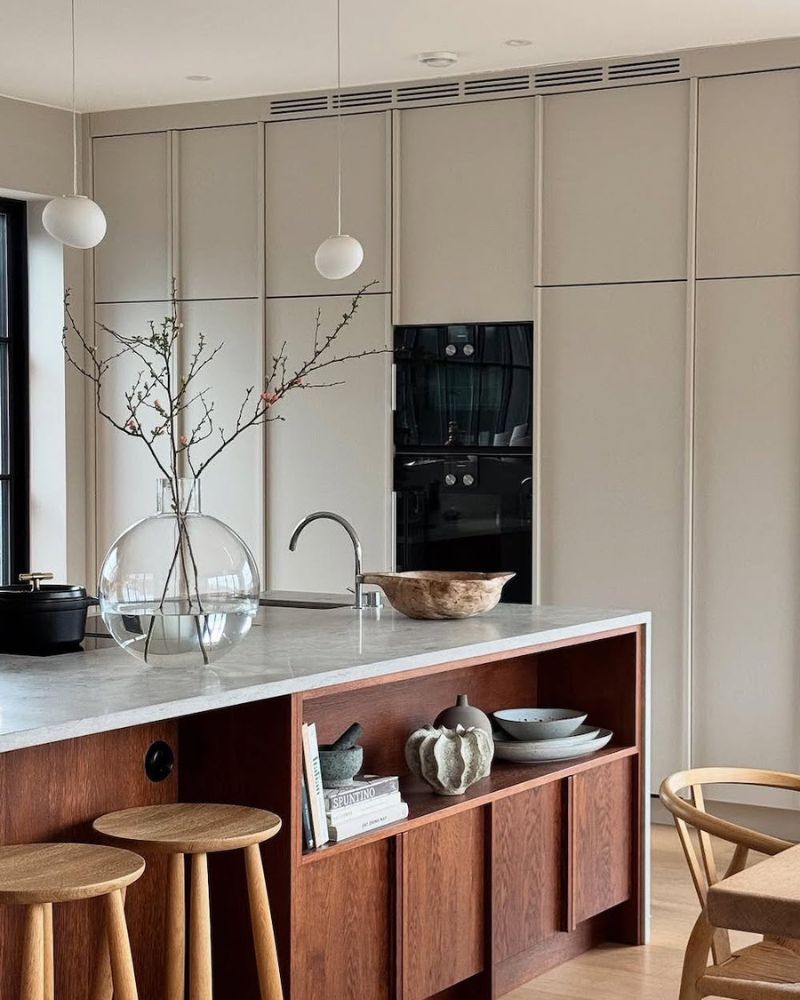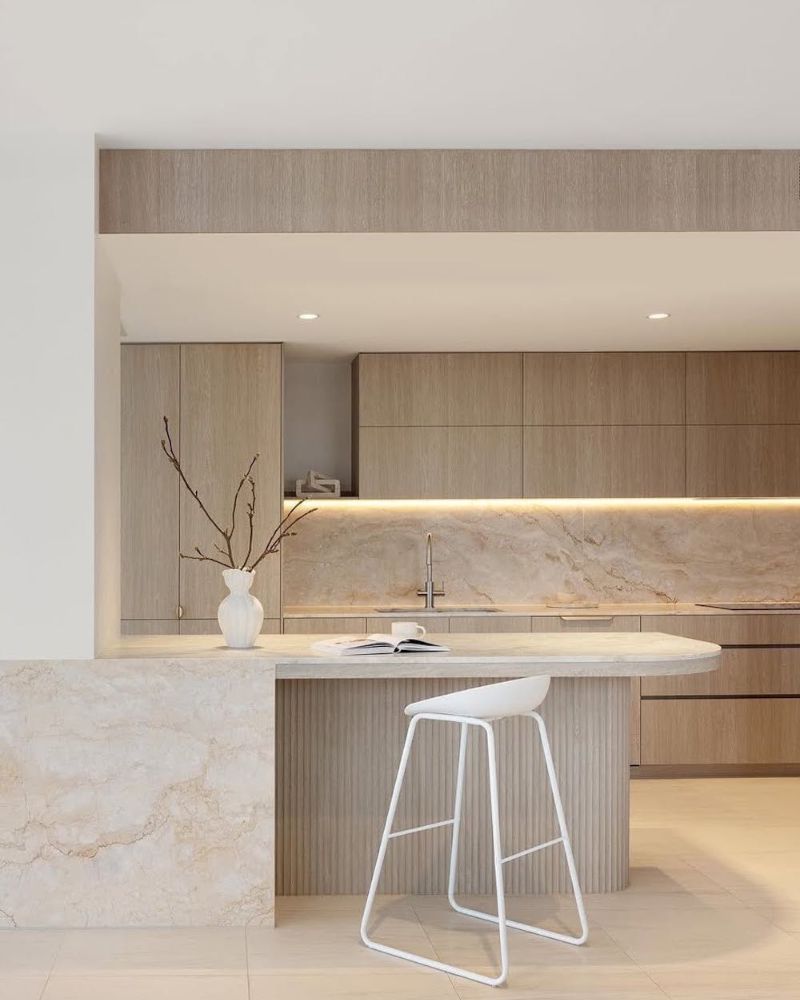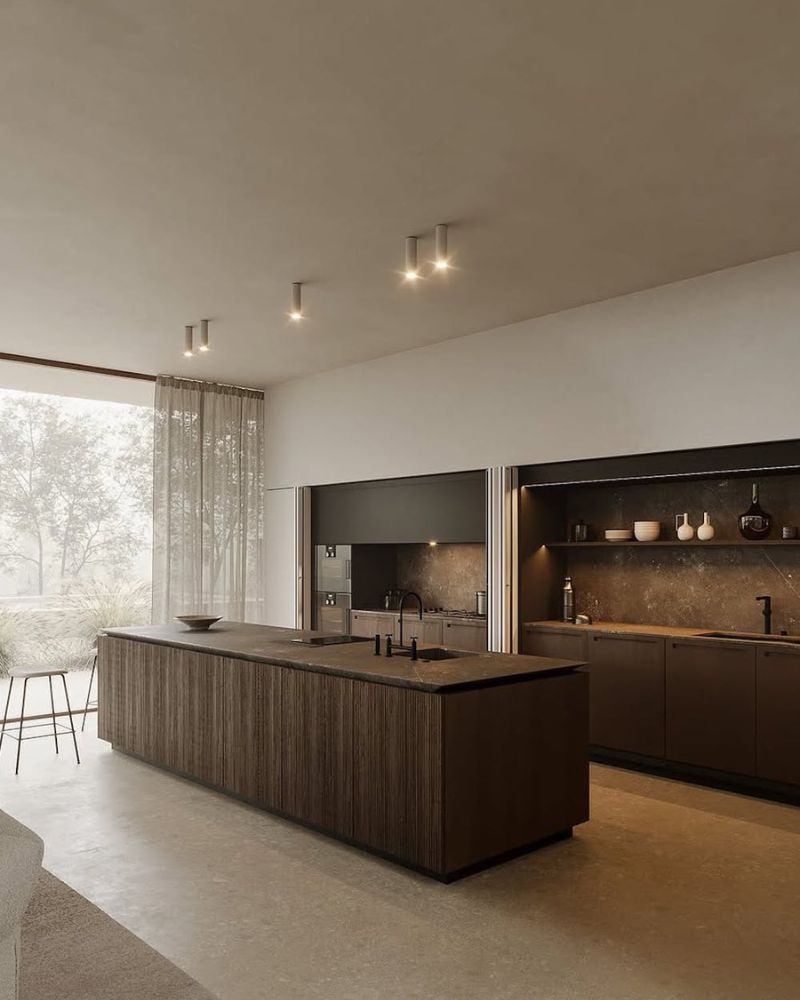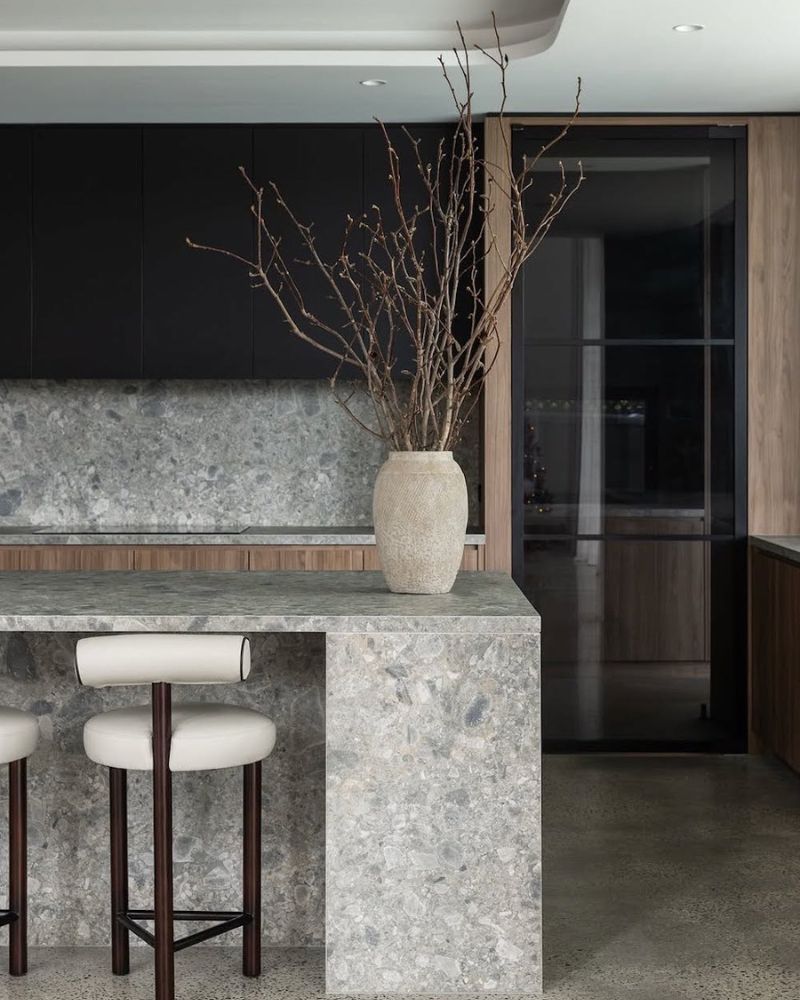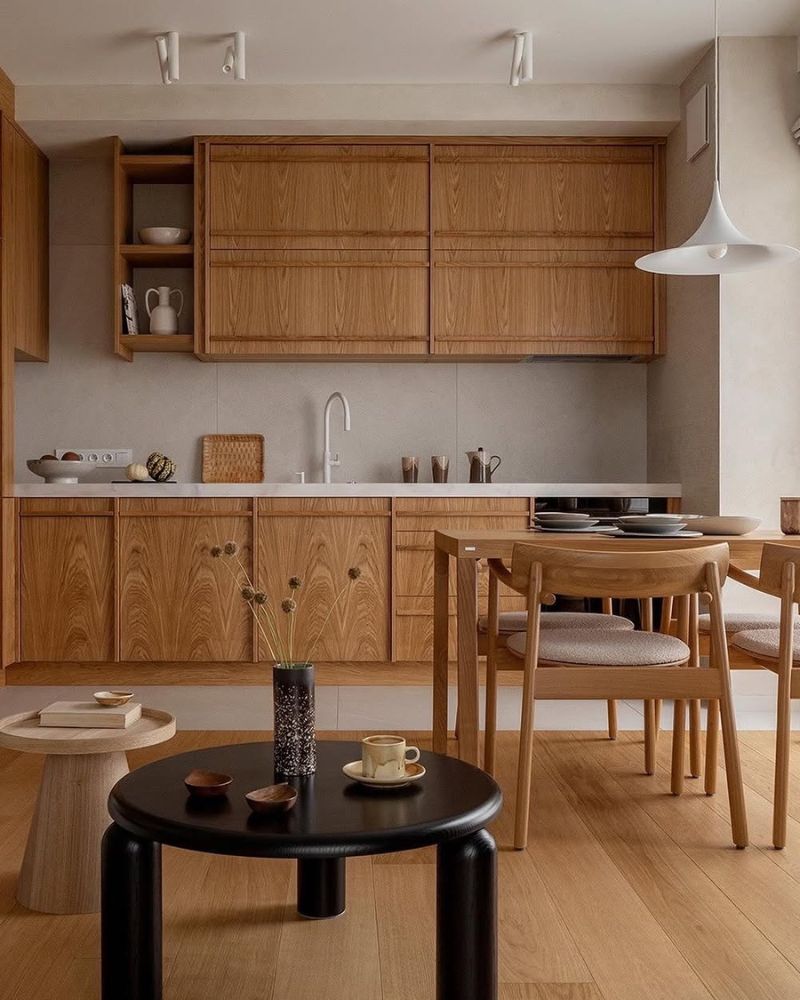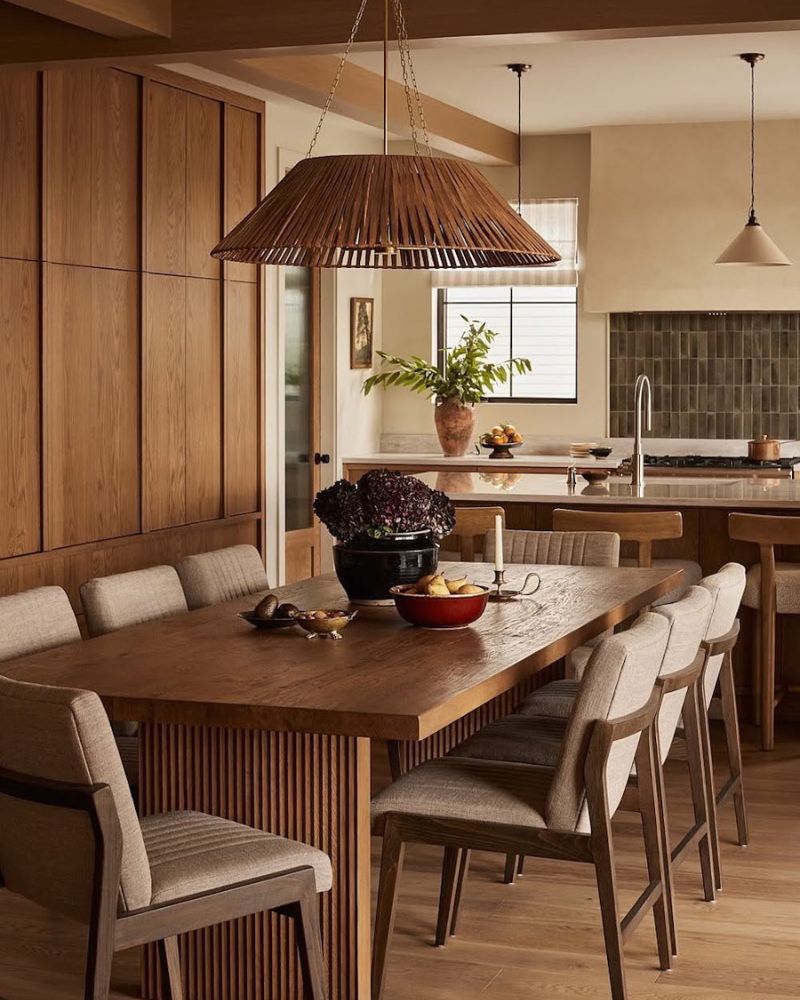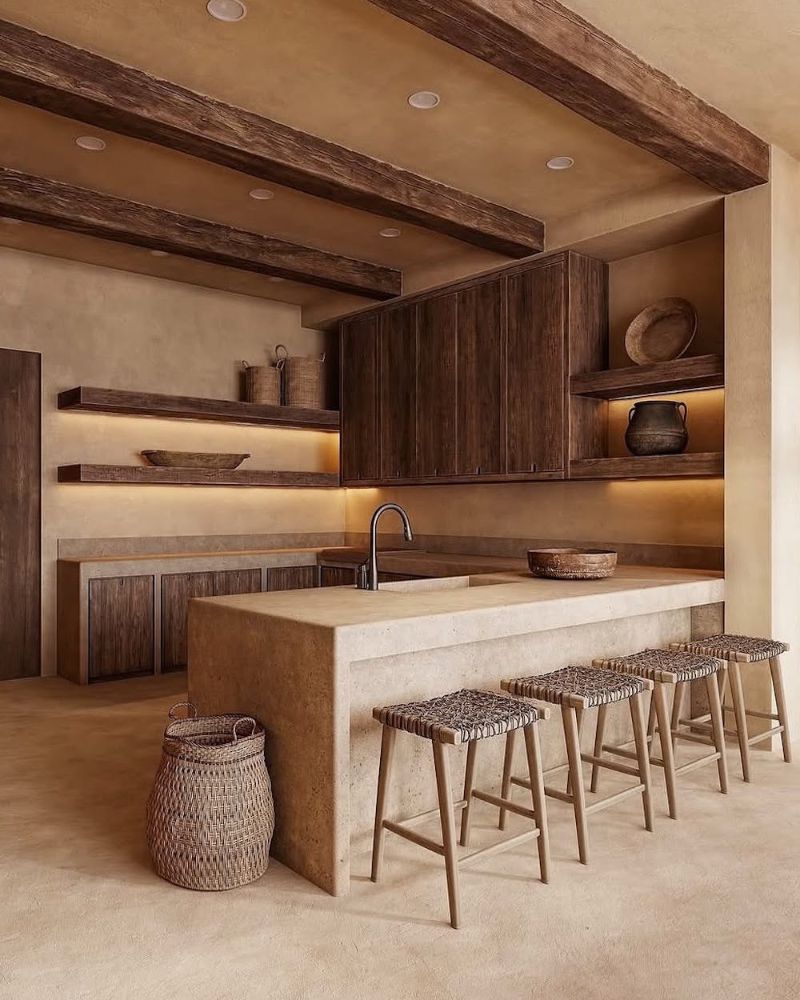Japandi design, this mix of Japanese minimalism and Scandinavian practicality, has been all over the place lately. And for good reason. It’s clean, it’s calming, and it somehow manages to feel both cozy and modern.
If you’re trying to make your kitchen a little less chaotic (while, you know, still actually using it), Japandi might be the vibe you need.
But if you’re drawn to a warmer, more rustic feel, you might also love these farmhouse kitchen ideas for a cozy and inviting space.
The whole Japandi concept is about balance. You want things to feel warm but not cluttered, simple but not cold. Natural materials, neutral tones, and a kind of quiet elegance that doesn’t scream for attention but still looks good.
So, let’s go over some ways you can bring this style into your kitchen without losing your mind.
Wood—Lots of It
First things first: wood. Japandi loves wood. You can use it for cabinets, shelving, or maybe even a wood-paneled fridge if you’re feeling bold. Oak, walnut, ash—whatever works for your space.
The point is to bring in some warmth and texture. Also, it just ages nicely. You know that thing where materials look better over time instead of worse? Yeah, that.
Cabinets That Don’t Try Too Hard
Flat-panel cabinets are where it’s at. No ornate details, no chunky handles—just smooth, clean lines. If you’re going to do hardware, keep it super minimal, or better yet, opt for push-to-open doors.
The idea is to create a space that feels open and uncluttered, which is great if you have a smaller kitchen and don’t want it to feel like a storage closet.
Lighting That Actually Makes Sense
Lighting is one of those things that can make or break a space. Natural light is the dream, obviously, but since you can’t install sunlight, you’ll need some good fixtures.
Think soft, layered lighting—pendant lights over the island, warm under-cabinet LEDs, maybe a wall sconce or two. You don’t want it to feel like an operating room, but you also need to see what you’re chopping.
Natural Materials Everywhere
Japandi kitchens rely on a mix of materials that feel organic and grounded. Wood and stone are a classic combo—maybe a wooden island with a marble or concrete countertop?
It’s all about contrast, but in a way that feels subtle. No shiny, high-gloss finishes here; matte and textured surfaces are your friends.
Stone for a Bit of Texture
Wood and stone together? Classic. If you don’t want to do marble (or don’t want to deal with the upkeep), there are plenty of stone options that bring in that same organic, lived-in look.
A stone backsplash or a textured concrete countertop can give the space a bit more depth without going overboard.
Keep It Low (Furniture, That Is)
Low-profile furniture is a nod to traditional Japanese design, and it just works. A low bench at your dining table or stools that don’t feel oversized help keep the space feeling grounded and relaxed. Plus, there’s something nice about furniture that doesn’t feel like it’s towering over you.
A Little Bit of Texture Goes a Long Way
A subtle accent wall can add just the right amount of visual interest without feeling like a huge commitment.
Reeded wood paneling? Yes. Textured plaster? Also yes. Anything that makes the space feel a little less flat but still keeps things cohesive.
Soften the Edges (Literally)
Japandi isn’t all straight lines and angles—curved shapes help balance things out. A rounded island, arched doorways, or even just a circular table can break up all the hard edges and add a little more flow to the space. And if you’re not up for a remodel, round decor elements—mirrors, vases, rugs—work too.
Create Depth Without Clutter
Even the simplest spaces can have layers. Tiered shelving, stacked counters, different seating heights—all of these little details make a space feel more intentional without making it feel busy.
Open layouts work especially well with Japandi because they encourage flow, and honestly, anything that makes the kitchen feel more social is a win.
Monochrome, but Not Boring
If you want to go full minimalist, a monochromatic palette can work—just make sure you’re playing with texture.
A space with all one color can still feel dynamic if you mix matte finishes, natural wood grains, and soft textiles. It’s all about creating variation without straying too far from the core aesthetic.
